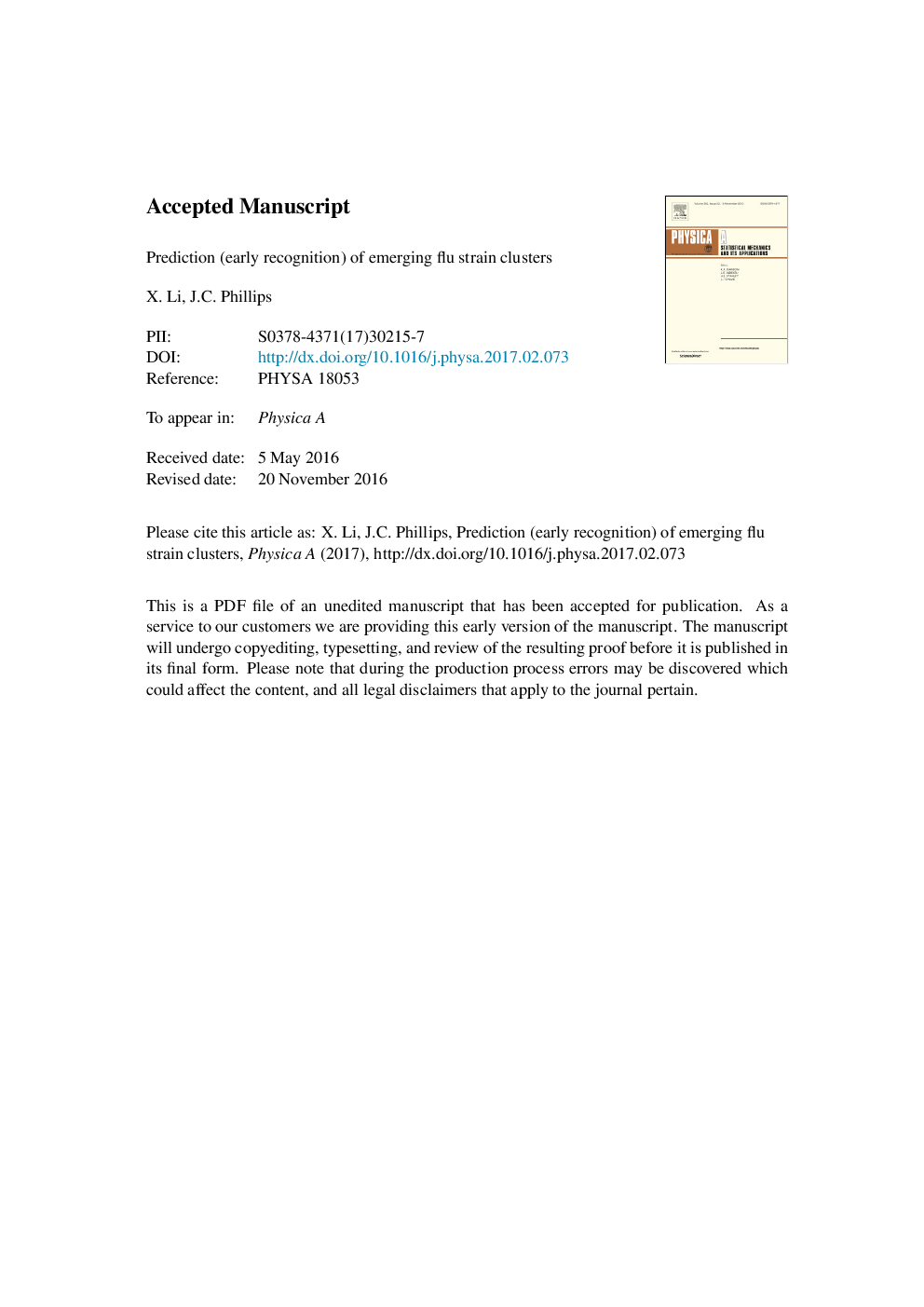| Article ID | Journal | Published Year | Pages | File Type |
|---|---|---|---|---|
| 5102991 | Physica A: Statistical Mechanics and its Applications | 2017 | 24 Pages |
Abstract
Early detection of incipient dominant influenza strains is one of the key steps in the design and manufacture of an effective annual influenza vaccine. Here we report the most current results for pandemic H3N2 flu vaccine design. A 2006 model of dimensional reduction (compaction) of viral mutational complexity derives two-dimensional Cartesian mutational maps (2DMM) that exhibit an emergent dominant strain as a small and distinct cluster of as few as 10 strains. We show that recent extensions of this model can detect incipient strains one year or more in advance of their dominance in the human population. Our structural interpretation of our unexpectedly rich 2DMM involves sialic acid, and is based on nearly 6000 strains in a series of recent 3-year time windows. Vaccine effectiveness is predicted best by analyzing dominant mutational epitopes.
Related Topics
Physical Sciences and Engineering
Mathematics
Mathematical Physics
Authors
X. Li, J.C. Phillips,
